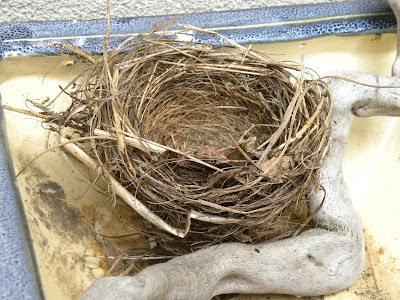Yes, is almost the end of summer, and I have some leftovers for you. Not to worry I am not talking about stale potato salad, slightly composted greens and dried out chicken, but instead some pictures from the summer that I have not yet shared with you.
This gull is giving me the "Aren't you supposed to be back at work with everyone else?" look; the gulls did not seem to miss the people and umbrellas, but they may be missing the handouts and food leftovers.
I had a discussion recently with some friends about the origins of the term Indian Summer. I have always thought that the term Indian Summer refers summer like conditions lasting through September and into October but since I didn't know for sure what it meant I thought it timely to do a bit of research.
Flowers into seeds:



According to Wikipedia: "The expression 'Indian summer' has been used for more than two centuries. The earliest known use was by French-American writer John Hector St. John de Crevecoeur in rural New York in 1778: "Then a severe frost succeeds which prepares it to receive the voluminous coat of snow which is soon to follow; though it is often preceded by a short interval of smoke and mildness, called the Indian Summer."
A colourful array of summer produce (tomatoes, eggplants and artichokes):
The summer's progression of colourful flowers: Lilies, sweet peas, lobelia, vicars mead, fuchsia, roses, day lilies, rhododendrons, echinacea, laitris and euphorbia.
A nest, now vacated, that a neighbour found and gave me:
And a few bunnies:
This one had a close look at me, then realizing I was not a threat started rolling around on the ground, occasionally stopping to have a look at me.
I took a short video of him doing a bit of cleanup following a roll in the dirt:
This is one of the many baby bunnies from early in the summer:
Here is a whole family, and then their mother watching over them:
One last video taken from a dock on one of the gulf islands this summer:
I hope you have enjoyed this "leftover" version of summer photographs.
I have just finished a painting of a large wooden mask that I saw at an indoor garden. It is a watercolour that I have called "Sun Washed":
Thank you for dropping by, hope you enjoyed your visit and Happy Whimsy Wednesday.
Until next week ...............
This gull is giving me the "Aren't you supposed to be back at work with everyone else?" look; the gulls did not seem to miss the people and umbrellas, but they may be missing the handouts and food leftovers.
I had a discussion recently with some friends about the origins of the term Indian Summer. I have always thought that the term Indian Summer refers summer like conditions lasting through September and into October but since I didn't know for sure what it meant I thought it timely to do a bit of research.
Flowers into seeds:



According to Wikipedia: "The expression 'Indian summer' has been used for more than two centuries. The earliest known use was by French-American writer John Hector St. John de Crevecoeur in rural New York in 1778: "Then a severe frost succeeds which prepares it to receive the voluminous coat of snow which is soon to follow; though it is often preceded by a short interval of smoke and mildness, called the Indian Summer."
Here are some theories about its etymology (from Wikipedia):
- "In Colonial New England and New York, Indian Summer referred only to a January thaw, when American Indian raiding parties could be expected in the western and northern areas: the ground had briefly lost its snow cover so tracking the Native American raiders back to their winter camps was much more difficult for the Colonials. "
- "In The Americans: The Colonial Experience, Daniel J. Boorstin speculates that the term originated from raids on European colonies by American Indian war parties; these raids usually ended in late autumn (due to snow covered ground), hence summer-like weather in the late fall and mid winter was an Indian Summer, a time raiding parties could be expected. "
I have usually heard the term Indian Summer used when summer weather lasts well past the fall equinox (third week in September), not necessarily preceded by a period of cold weather. It is probably too soon to say for sure but I have heard predictions of an Indian Summer for this year; fingers crossed that it happens.
- "It may be so named because this was the traditional period during which early American Indians harvested their crops of squash and corn."
A colourful array of summer produce (tomatoes, eggplants and artichokes):
The summer's progression of colourful flowers: Lilies, sweet peas, lobelia, vicars mead, fuchsia, roses, day lilies, rhododendrons, echinacea, laitris and euphorbia.
A nest, now vacated, that a neighbour found and gave me:
And a few bunnies:
This one had a close look at me, then realizing I was not a threat started rolling around on the ground, occasionally stopping to have a look at me.
I took a short video of him doing a bit of cleanup following a roll in the dirt:
This is one of the many baby bunnies from early in the summer:
Here is a whole family, and then their mother watching over them:
One last video taken from a dock on one of the gulf islands this summer:
"Leftovers in their less visible form are called memories. Stored in the refrigerator of the mind and the cupboard of the heart." Thomas Fuller
Thank you for dropping by, hope you enjoyed your visit and Happy Whimsy Wednesday.
Until next week ...............





































